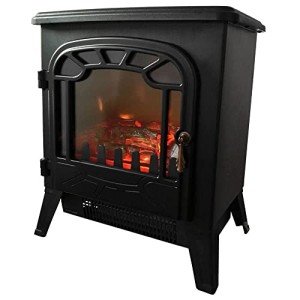The Expert Guide To Fireplace
The Charm and Functionality of Fireplaces: A Comprehensive Guide
Fireplaces have actually long been a central function in homes, representing heat, friendship, and convenience. They are available in different styles, products, and fuel types, dealing with the choices and requirements of diverse property owners. This post looks into the diverse world of fireplaces, exploring their history, types, setup considerations, and upkeep pointers, while offering FAQs to attend to common questions.
A Brief History of Fireplaces
Historically, fireplaces acted as the cornerstone for cooking and heating homes. In ancient times, an open hearth was often positioned in the center of a residence. Over centuries, architectural developments assisted in the advancement of more advanced designs, progressing from easy stone structures to elaborate mantels that preside over modern home.
Secret Historical Milestones:
- Ancient Times: Open fires in caverns and primitive huts for heat and cooking.
- Middle Ages: Large, typically centralized chimney structures in fantastic halls of castles.
- Renaissance: Decorative mantels and styles gain appeal, with the fireplace becoming a symbol of wealth and status.
- Industrial Revolution: Advancements in materials and producing permit for a wider range of fireplace styles.
- Modern Era: Gas and electric fireplaces become commonplace, permitting increased convenience and safety.
Types of Fireplaces
Today, various kinds of fireplaces are readily available, each with its distinct attributes. Below is a breakdown of the most common types:
Fireplace Type
Description
Pros
Cons
Wood-Burning
Traditional fireplaces sustained by wood.
Genuine experience, heat output.
Labor-intensive, requires appropriate venting/maintenance.
Gas
Fireplaces that use natural gas or gas.
Easy to utilize and preserve.
Less atmosphere compared to wood.
Electric
Uses electrical power to produce heat and flames.
Safe, no venting required.
Restricted heat output, greater energy costs.
Bioethanol
Uses bioethanol fuel, producing tidy flames.
Eco-friendly, portable.
Requires routine refueling.
Pellet
Utilizes compressed wood pellets as fuel.
Tidy burning, sustainable.
Requires power for operation.
Extra Considerations
When choosing a fireplace, it is vital to think about elements such as:
- Fuel Availability: Consider what fuels are readily accessible in your location.
- Space and Aesthetics: The size of your living area and your style preferences must direct your choice.
- Structure Regulations: Always seek advice from regional regulations to ensure compliance and security.
Setup Considerations
Setting up a fireplace includes more than simply putting a structure in your house. Thorough preparation, professional input, and adherence to security codes are critical. Here are some important steps:
- Planning: Consider the size and kind of fireplace, where it will be placed, and its desired usage.
- Assessment: Hire a licensed specialist to evaluate your home and make sure appropriate installation.
- Permits: Obtain any required building permits from local authorities.
- Materials: Select proper materials for the fireplace and surrounding area. Ensure they are fireproof and developed for your fuel type.
Upkeep Tips for Fireplaces
Routine upkeep guarantees your fireplace operates safely and effectively. Here are vital maintenance suggestions categorized by fireplace type:
Wood-Burning Fireplaces
- Chimney Cleaning: Have your chimney cleaned each year to prevent creosote accumulation.
- Inspect for Damage: Check for cracks and damage to the firebox and chimney structure.
- Firewood Storage: Store firewood away from your house to avoid bug invasions.
Gas Fireplaces
- Log Inspection: Regularly examine ceramic logs for cracks and change if required.
- Vent Cleaning: Ensure that vents are free from blockages.
- Pilot Burner Check: Test pilot lights and ignition systems frequently.
Electric Fireplaces
- Cord Inspection: Frequently examine electrical cords for fraying or use.
- Clean Surfaces: Wipe down surface areas regularly to get rid of dust and debris.
- Smoke alarm: Ensure smoke alarm in the area are functional.
Bioethanol and Pellet Fireplaces
- Fuel Storage: Store fuels in a cool, dry place far from direct sunshine.
- Regular Refueling: Monitor fuel levels and refuel as required.
- Ventilation: Ensure proper ventilation when utilizing these fireplaces.
FAQs About Fireplaces
Q1: Do I need a permit to install a fireplace?
Yes, many towns need permits for fireplace setups to make sure security and compliance with regional building regulations.
Q2: How typically should I clean my chimney?
It is suggested to have your chimney cleaned up a minimum of when a year, specifically if you use your fireplace frequently.
Q3: Can I transform a wood-burning fireplace to gas?
Yes, many property owners convert wood-burning fireplaces to gas for benefit, but seeking advice from a professional is recommended to guarantee a proper conversion.
Q4: Do electric fireplaces produce heat?
Yes, electric fireplaces can produce heat; however, their main function is typically for ambiance, making them an appropriate choice for those who want a fire appearance without comprehensive heating.
Q5: Are bioethanol fireplaces safe?
Bioethanol fireplaces are generally safe when used correctly; however, they require correct ventilation, and users ought to follow all maker guidelines.
Fireplaces not only add visual interest homes however also provide practical heating services. With get more info , styles, and upkeep requirements, house owners can make educated options that best suit their needs and way of lives. Whether deciding for the charm of a wood-burning fireplace or the benefit of a gas model, a fireplace can substantially enhance a living space's comfort and atmosphere. As the hearth remains a centerpiece in homes, it continues to promote heat, conversation, and connections among friends and family.
